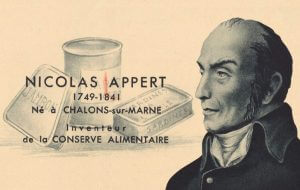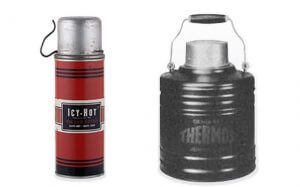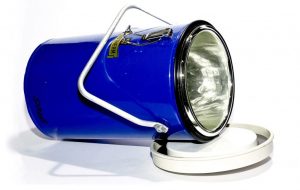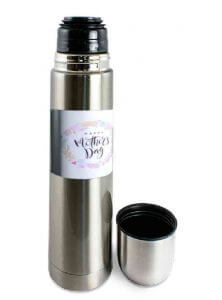2.18. Canar money box
Canar money box. Why are piggy banks shaped like pigs? Piggy banks are very often used by children to put...
Read More
2.17. Bottle openers, nutcrackers and accessories
Toolbox bottle openers, nutcrackers and accessories Taste dried fruit or enjoy a good bottle of wine with an original...
Read More
2.15. DIY candle kit
DIY candle kit DIY candle kit Many of us have probably already bought several candles as gifts from a decoration,...
Read More
2.14. Trophy statuette on base
Trophy statuette on base This trophy statuette funny gadget gift is outstanding. Generally speaking, trophies take the form of a...
Read More
2.12. Chess
Chess game History of the chess game A chess game is a 64-square board on which two players compete...
Read More
2.11. Candles
Candles Introduction Let's start by putting candles in the context of the history of lighting. The history of...
Read More
2.10. Mugs
Mug personalised mugs, cool coffee mugs Gifts-custopolis.com History of the cup, best coffe cup, cute mugs Long ago, before...
Read More
2.01. Yellow duck nightlight
Yellow duck nightlight Hello or rather quack quack, but also coin coin in French or kwak kwak in...
Read More
2.02. Jewellery box
Jewellery box a) Jewellery in a bank safe ? The object we offer is made of faux leather...
Read More
2.03. Metal boxes
Metal boxes Gifts-custopolis.com sells metal tins whose lids can be personalised with a photo of your children, a travel photo...
Read More
2.18. Canar money box
2.17. Bottle openers, nutcrackers and accessories
2.15. DIY candle kit
2.14. Trophy statuette on base
2.12. Chess
2.11. Candles
2.10. Mugs
2.01. Yellow duck nightlight
2.02. Jewellery box
2.03. Metal boxes
Isothermal bottle
Foreword
Practical and lightweight, the insulated bottle has revolutionised our consumption and is now as much a part of our daily lives as a handbag or a telephone. It allows you to take your favourite drink wherever you go and keep it at the right temperature all day long. It has evolved a lot over the years: weight, materials, user-friendliness and design.
An isothermal bottle to personalize it has become mandatory! You will get that at Gifts-custopolis.com undeniably. Unusual gift for, kdo idea for, customizable gift idea, birthday gifts for, unusual birthday gift.
Introduction
“Since the invention of the insulated bottle, the question has never been how to keep hot liquids hot and cold liquids cold”.
The big question is how it works.
The answer is: by using foam or vacuum packaging. There is more to an insulated bottle than meets the eye. What we think of as a rigid container is actually a container within a container, with foam or vacuum between the inner wall of the outer container and the outer wall of the inner container. Foam containers keep cold liquids cold and vacuum containers keep hot liquids hot. This method has proven to be very effective since the early 20th century and that is why insulated bottles are popular with anyone who needs or wants to drink liquids on the go, such as athletes, travellers, campers and hikers, or just the average busy person who is thirsty from time to time and has prepared their hot or cold drink in advance. Many baby bottles are also insulated.”
History
“The first known bottles made of glass were created by the Egyptians around 1500 BC. The bottles were formed by placing molten glass around a core of sand and clay. The core was then hollowed out once the glass had cooled. Making the bottles was a long and complicated process, so they were considered a luxury item in ancient Egypt. Around 200 BC, glass bottles were made in China and Persia, as well as in Egypt, using a method of blowing molten glass into a mould. The Romans later adopted the same method and the technique spread throughout Europe in the 1400s and 1500s.



In the USA
The first bottle and glass factory in the USA was founded in 1608 in Virginia. In the 1800s, new variations of the glass bottle appeared. The baby bottle, for example, was patented in 1841. However, the concept was not new. In ancient times, babies were fed with a bottle with two openings. One opening was used to pour the liquid into the bottle and the second opening was placed in the baby’s mouth. The 16th century bottle looked like a duck; the baby was fed through its beak. Glassblower John L. Mason designed the first glass jar with a screw top in 1858, the now famous Mason jar. In the mid-19th century, Dr Hervey Thatcher invented the glass milk bottle. The Coca-Cola Company introduced the first soft drink bottle in 1915. Several other brands followed, each with its own distinctive bottle shape. The shape and weight of soft drink bottles were standardised after 1934″, but standardisation is relative, as each brand differs in its design and increasingly in the contents of the bottle.
“The bottle manufacturing process was first automated in 1865 with the introduction of a press and blow machine.
In France
1888, the Arsonval vase
An important step was taken by the physicist Arsène d’Arsonval (1851-1940), one of the greatest French scientists. He invented a revolutionary container, the d’Arsonval vase. In 1888 he introduced the first double-walled glass bottle with an internal vacuum. Although we generally use the isothermal bottle to keep our drinks hot, it was originally designed to store liquid air at very low temperatures for several days. His colleague, the physicist Violle, improved it by coating the inner surface with a thin metal layer to reduce radiation losses. Thus was born the very first isothermal bottle in France. With a height of 40 cm and a diameter of 20 cm, this hemispherical vase is made up of a highly insulating silver double wall with an internal vacuum.
In the United Kingdom
1892, the Dewar vase
The Scottish chemist and physicist Sir James Dewar (1842-1923) was the first to produce liquid hydrogen, which was the coldest substance ever produced.
To store this cryogenic material at very low temperatures, he constructed insulated boxes from cork, hay or crumpled newspapers, but none of these solutions held the liquids sufficiently. He then discovered and improved the Arsonval vessel.
In 1892, he proposed his version of the double-walled glass vacuum flask that bears his name, the Dewar flask. It takes the form of a glass balloon with a straight neck. The narrow space between the two walls is almost entirely free of air, this partial vacuum prevents heat conduction and convection for better insulation. He added silver as a metallic coating to prevent radiation. This invention eliminates any possibility of heat transfer by conduction, convection or radiation. He hired a professional glass blower to make a stronger balloon. In 1898, he used this container to transport and introduce liquid hydrogen to the world.
In the USA
The first fully automatic machine for making various types of glass bottles and jars did not appear until 1903, when an employee of a Toledo, Ohio fireplace lamp company named Michael J. Owens put the Owens bottle machine into commercial use.
The Owens bottle machine revolutionised the industry by enabling the inexpensive and large-scale production of glass bottles. Together with the Crown bottle stopper, it also helped stimulate the soft drink industry on a large scale. By 1920, most bottles were produced on Owens machines or on machines based on Owens’ invention. In the early 1940s, manufacturers began using blow moulding machines to produce plastic bottles. Blow moulding is a process in which tiny pellets of plastic resin are heated and forcefully injected into a mould in the shape of the product. As the product cools, it takes on the shape of the mould. The first plastic bottles were squeezable and made of polyethylene. Nat Wyeth, a relative of the American artist Andrew Wyeth, designed the first plastic bottle strong enough to hold soft drinks for the Du Pont company.
In the USA (continued)
The first insulated bottle was probably designed by the English scientist Sir James Dewar in 1896. In 1892, Dewar had invented a special flask that is still in use today and is attributed to him by his name. Dewar created his isothermal bottle by sealing one bottle inside another and pumping air between them. This created a vacuum, which is an effective insulator. Dewar never patented his invention, however. It was the German glass blower Reinhold Burger and his partner Albert Aschenbrenner, who made bottles for Dewar, who decided to market Dewar’s invention. Burger and Aschenbrenner organised a competition to name Dewar’s device. A Munich resident suggested the name thermos from the Greek word threm, which means hot. Together with Gustav von Paalen, Burger and Aschenbrenner formed a company to manufacture Dewar’s invention and called it Thermos GmbH.
1904, THERMOS MARKETS THE FIRST ISOTHERMAL BOTTLE
Paalen, Burger and Aschenbrenner only registered the now well-known name Thermos in 1906, the same year they met the American businessman William B. Walker in Berlin. Walker learned of their invention and obtained exclusive rights to manufacture and market it in the United States.
The American Thermos Bottle Company was incorporated on 31 January 1907 in Portland, Maine, and established production in Brooklyn, New York. The Thermos insulated bottle quickly gained popularity in the United States. Famous users include President Taft; explorers Lieutenant EH Shackleton, who took his to the South Pole and Lieutenant Robert E. Peary, who took his to the Arctic; Colonel Roosevelt on an expedition to Mombasa; Richard Harding Davis on a trip to the African Congo; Count Zeppelin, who took his in his hot air balloon; and the Wright brothers in their aeroplane.
This 1915 glass-lined, vacuum-sealed aluminium bottle was one of the first products of the American Thermos Bottle Company, founded in Norwich, Connecticut, around 1907 (renamed King Seeley Thermos or KST after 1959). The name Thermos is synonymous with the insulated bottle. Outdoor workers, especially construction workers, have been taking both to work since KST was founded. Workers’ recollections sometimes show that they felt they were truly part of the workforce when they ceremoniously bought or received a vacuum bottle for their coffee.
Schoolchildren also ask for new lunch boxes and thermos flasks every year. The lunchbox manufacturer “Aloddin” and its competitor “KST” wanted to sell their products to children. So their artists began to regularly change the art and design of their lunch boxes (first metal, then plastic) and vacuum bottles. From 1950 to 1970, over 120 million children’s lunch boxes and vacuum bottles were sold, from “Hopalong Cassidy” to “Peanuts”. There’s a lot of chocolate milk in those bottles! Of course, it could also be hot chocolate – the joke is that no one understands how the vacuum bottle can be so clever – how can a vacuum bottle know when to keep cold liquids cool and hot liquids warm?
Raw materials
The main raw materials used in the manufacture of the insulated bottle are plastic or stainless steel, from which the outer bottle is formed, and glass, from which the inner bottle is often formed (the inner bottle can also be formed).
In an assembly line process, the outer bottle is fitted with the inner liner. A glass filter, made by a subcontractor, or a stainless steel filter, made of stainless steel, is placed in the outer bottle.
Insulated bottles for cold drinks are often lined with foam.
The manufacturing process
The foam
1 The foam arrives at the factory in the form of liquid chemical balls. These balls are placed together, forming a chemical reaction that generates heat.
2 The liquid mixture is heated slightly, (between 23.9 and 26.7°).
3 Once the reaction is complete, the mixture is allowed to cool slightly and a liquid foam is formed
The bottle
4 The outer bottle is formed. If the outer bottle is made of plastic, it is made by a process called blow moulding. In blow moulding, small pellets of plastic resin are heated and forcefully blown into a mould to obtain the desired shape. If the outer bottle is made of stainless steel, it has been shaped from a stainless steel sheet.
5 In an assembly line process, the formed outer part is fitted with the inner lining. A glass filter, made outside the factory, or a stainless steel filter, hammered into a stainless steel plate, is placed inside the outer bottle.
6 Then the insulation is added. For a cold bottle, foam in liquid form is sprayed into the space between the bottles and allowed to harden. For an insulated bottle, a large hoover sucks the air from the space between the two bottles.
7 A silicone sealant is sprayed on the walls to hold them together.
8 The steel bottles are then painted.
9 The company logo is pad printed on each bottle or a sticker with the company name is placed on the bottle. Pad printing creates a permanent imprint in the material, rather than on it.
10 Once the insulated bottles have passed quality control, they are packaged and prepared for shipment.
11 Like the bottle, the top of the insulated bottle is blow-moulded. If the cap has a stopper (many insulated bottles have stoppers that can be pulled up from the cap. The liquid flows through a small hole in the cap), this is also blow-moulded.
12 A small plug is punched into the cap to allow liquids to flow through it.
Quality control
Many insulated bottles are subject to strict and thorough quality control. In addition to in-line quality inspections, the company may test the finished product for visual defects and perform the heat retention and leakage tests required by the relevant standards. Companies can also use a special lighting system, called the Macbeth lighting system, which helps them visually inspect the paint colours to see if they match the company’s prototypes. Before the bottle is manufactured, the foam itself can also be rigorously tested for rise, density, temperature during mixing, viscosity, voids and discolouration.
The future
New models of insulated bottles are coming onto the market. Designs are being adapted to people’s needs and interests and various technical innovations, such as colour schemes, are evolving to meet consumer preferences. Many companies that are not in the insulated bottle business sell or give away water bottles with their name on them, knowing that users will get free advertising every time they carry their insulated bottle on the street. Insulated bottle companies are also expanding into international markets, targeting regions such as Asia, Mexico, South America, Africa and the Middle East.
Summary
An isothermal bottle, or by antonomasia a thermos bottle or thermos (named after the brand Thermos), is a bottle that allows a liquid to be maintained at a temperature close to its initial temperature. It is considered in thermodynamics as an approximation of an isolated system.
> At the beginning of the 19th century, Arsène d’Arsonval (1851-1940), a doctor, French pioneer of medical electricity and a great engineer, but above all a visionary, invented the Arsonval vase, the first isothermal container. In 1888, D’Arsonval designed the double-walled glass vases with an internal vacuum to store volatile liquids. It was the French physicist Violle who came up with the idea of metalizing the inside of these containers to reduce radiation losses, and thus the first isothermal bottle was born.
> The British chemist and physicist James Dewar was the first to produce liquid hydrogen. In order to preserve this substance at very low temperatures, he designed an insulating container in 1892, consisting of two glass walls separated by a vacuum: the Dewar bottle.
> In 1903, Reinhold Burger, a glass technician, invented the thermos flask. He perfected the Dewar’s vase and marketed the first insulated bottle under the brand name “Thermos” (from the ancient Greek thermos, “hot”).
On 1 October 1903, a patent was granted for a vacuum flask for everyday use with a solid metal foil lining. Patent DRP NO. 170057 from the Imperial Patent Office.
The following year, in 1904, he protected the trademark thermos.
An isothermal bottle to personalize it has become a priority! You’ll find it at Gifts-custopolis.com without a doubt. Gift idea for, unusual gift idea, unusual gift to personalize, unusual gifts mother’s day, unusual gift idea mother’s day, original gift mamma
Bibliographie
From a text on “Madeshow.com
http://www.madehow.com/Volume-4/Insulated-Bottle.html
Extract from the text: Bouteilles isotherme: ” Le guide des meilleurs bouteilles réutilisables”
https://www.bouteille-isotherme.fr/histoire-bouteille-isotherme
Extract from the text “Thermos: qu’est ce que c’est ?
https//www.futura-sciences.com/maison/definitions/maison-thermos-11155/
Extract from de text “Hisioire des objets”
http://www.musee-boissons.com/page/a histoire objets.html#bouteille isotherme
Extract from the text: “Thermos”
https://fr.wekipedia.org/wiki/Thermos (marque)
Extract from the text: Bouteille isotherme
http://fr.wikipedia.org/wiki/Bouteille isotherme
- Feed has no items.




